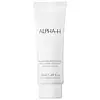What's inside
What's inside
 Key Ingredients
Key Ingredients

 Benefits
Benefits

 Concerns
Concerns

 Ingredients Side-by-side
Ingredients Side-by-side

Water
Skin ConditioningVitis Vinifera Seed Oil
EmollientCetyl Alcohol
EmollientCamellia Kissi Seed Oil
EmollientCeteareth-20
CleansingDicaprylyl Carbonate
EmollientCetearyl Olivate
Glycerin
HumectantSorbitan Olivate
EmulsifyingAluminum Starch Octenylsuccinate
AbsorbentRosa Canina Fruit Oil
EmollientSimmondsia Chinensis Seed Oil
EmollientLevulinic Acid
PerfumingCitrus Aurantium Dulcis Peel Extract
Emulsion StabilisingXanthan Gum
EmulsifyingSodium Benzoate
MaskingSodium Levulinate
Skin ConditioningTocopherol
AntioxidantAloe Barbadensis Leaf Juice
Skin ConditioningSodium Gluconate
Skin ConditioningPotassium Sorbate
PreservativePelargonium Graveolens Flower Oil
MaskingCitrus Nobilis Peel Oil
MaskingMyristyl Alcohol
EmollientStearyl Alcohol
EmollientGlycine Soja Oil
EmollientMyrocarpus Fastigiatus Oil
MaskingChamomilla Recutita Flower Oil
MaskingPotassium Hydroxide
BufferingBixa Orellana Seed Oil
EmollientGeraniol
PerfumingLimonene
PerfumingCitronellol
PerfumingLinalool
PerfumingCitral
PerfumingWater, Vitis Vinifera Seed Oil, Cetyl Alcohol, Camellia Kissi Seed Oil, Ceteareth-20, Dicaprylyl Carbonate, Cetearyl Olivate, Glycerin, Sorbitan Olivate, Aluminum Starch Octenylsuccinate, Rosa Canina Fruit Oil, Simmondsia Chinensis Seed Oil, Levulinic Acid, Citrus Aurantium Dulcis Peel Extract, Xanthan Gum, Sodium Benzoate, Sodium Levulinate, Tocopherol, Aloe Barbadensis Leaf Juice, Sodium Gluconate, Potassium Sorbate, Pelargonium Graveolens Flower Oil, Citrus Nobilis Peel Oil, Myristyl Alcohol, Stearyl Alcohol, Glycine Soja Oil, Myrocarpus Fastigiatus Oil, Chamomilla Recutita Flower Oil, Potassium Hydroxide, Bixa Orellana Seed Oil, Geraniol, Limonene, Citronellol, Linalool, Citral
Water
Skin ConditioningGlycolic Acid
BufferingAloe Barbadensis Leaf Juice
Skin ConditioningPotassium Hydroxide
BufferingCetyl Alcohol
EmollientCyclomethicone
EmollientEthylhexyl Palmitate
EmollientSorbitol
HumectantCeteth-20
CleansingStearic Acid
CleansingPEG-100 Stearate
Glyceryl Stearate
EmollientStearyl Heptanoate
EmollientPrunus Amygdalus Dulcis Oil
Skin ConditioningGlycerin
HumectantPhenoxyethanol
PreservativePolysorbate 20
EmulsifyingDimethicone
EmollientHyaluronic Acid
HumectantHydrolyzed Collagen
EmollientTocopheryl Acetate
AntioxidantMenthol
MaskingPiroctone Olamine
PreservativeCamellia Sinensis Leaf Extract
AntimicrobialWater, Glycolic Acid, Aloe Barbadensis Leaf Juice, Potassium Hydroxide, Cetyl Alcohol, Cyclomethicone, Ethylhexyl Palmitate, Sorbitol, Ceteth-20, Stearic Acid, PEG-100 Stearate, Glyceryl Stearate, Stearyl Heptanoate, Prunus Amygdalus Dulcis Oil, Glycerin, Phenoxyethanol, Polysorbate 20, Dimethicone, Hyaluronic Acid, Hydrolyzed Collagen, Tocopheryl Acetate, Menthol, Piroctone Olamine, Camellia Sinensis Leaf Extract
 Reviews
Reviews

Ingredients Explained
These ingredients are found in both products.
Ingredients higher up in an ingredient list are typically present in a larger amount.
Aloe Barbadensis Leaf Juice comes from leaves of the aloe plant. Aloe Barbadensis Leaf Juice is best known for helping to soothe sunburns. It is also anti-inflammatory, moisturizing, antiseptic, and can help heal wounds.
Aloe is packed with good stuff including Vitamins A, C, and E. These vitamins are antioxidants, which help fight free-radicals and the damage they may cause. Free-radicals are molecules that may damage your skin cells, such as pollution.
Aloe Barbadensis Leaf Juice also contains sugars. These sugars come in the form of monosaccharides and polysaccharides, folic acid, and choline. These sugars are able to help bind moisture to skin.
It also contains minerals such as calcium, 12 anthraquinones, fatty acids, amino acids, and Vitamin B12.
Learn more about Aloe Barbadensis Leaf JuiceCetyl Alcohol is a fatty alcohol. Fatty Alcohols are most often used as an emollient or to thicken a product.
Its main roles are:
Though it has "alcohol" in the name, it is not related to denatured alcohol or ethyl alcohol.
The FDA allows products labeled "alcohol-free" to have fatty alcohols.
Learn more about Cetyl AlcoholGlycerin is already naturally found in your skin. It helps moisturize and protect your skin.
A study from 2016 found glycerin to be more effective as a humectant than AHAs and hyaluronic acid.
As a humectant, it helps the skin stay hydrated by pulling moisture to your skin. The low molecular weight of glycerin allows it to pull moisture into the deeper layers of your skin.
Hydrated skin improves your skin barrier; Your skin barrier helps protect against irritants and bacteria.
Glycerin has also been found to have antimicrobial and antiviral properties. Due to these properties, glycerin is often used in wound and burn treatments.
In cosmetics, glycerin is usually derived from plants such as soybean or palm. However, it can also be sourced from animals, such as tallow or animal fat.
This ingredient is organic, colorless, odorless, and non-toxic.
Glycerin is the name for this ingredient in American English. British English uses Glycerol/Glycerine.
Learn more about GlycerinPotassium hydroxide is commonly known as caustic potash. It is used to fix the pH of a product or as a cleaning agent in soap. In cleansers, it is used for the saponification of oils.
Sapnification is the process of creating fatty acid metal salts from triglycerides and a strong base. During this process, Potassium Hydroxide is used up and is not present in the final product.
Using high concentrations of Potassium Hydroxide have shown to irritate the skin.
Learn more about Potassium HydroxideWater. It's the most common cosmetic ingredient of all. You'll usually see it at the top of ingredient lists, meaning that it makes up the largest part of the product.
So why is it so popular? Water most often acts as a solvent - this means that it helps dissolve other ingredients into the formulation.
You'll also recognize water as that liquid we all need to stay alive. If you see this, drink a glass of water. Stay hydrated!
Learn more about Water